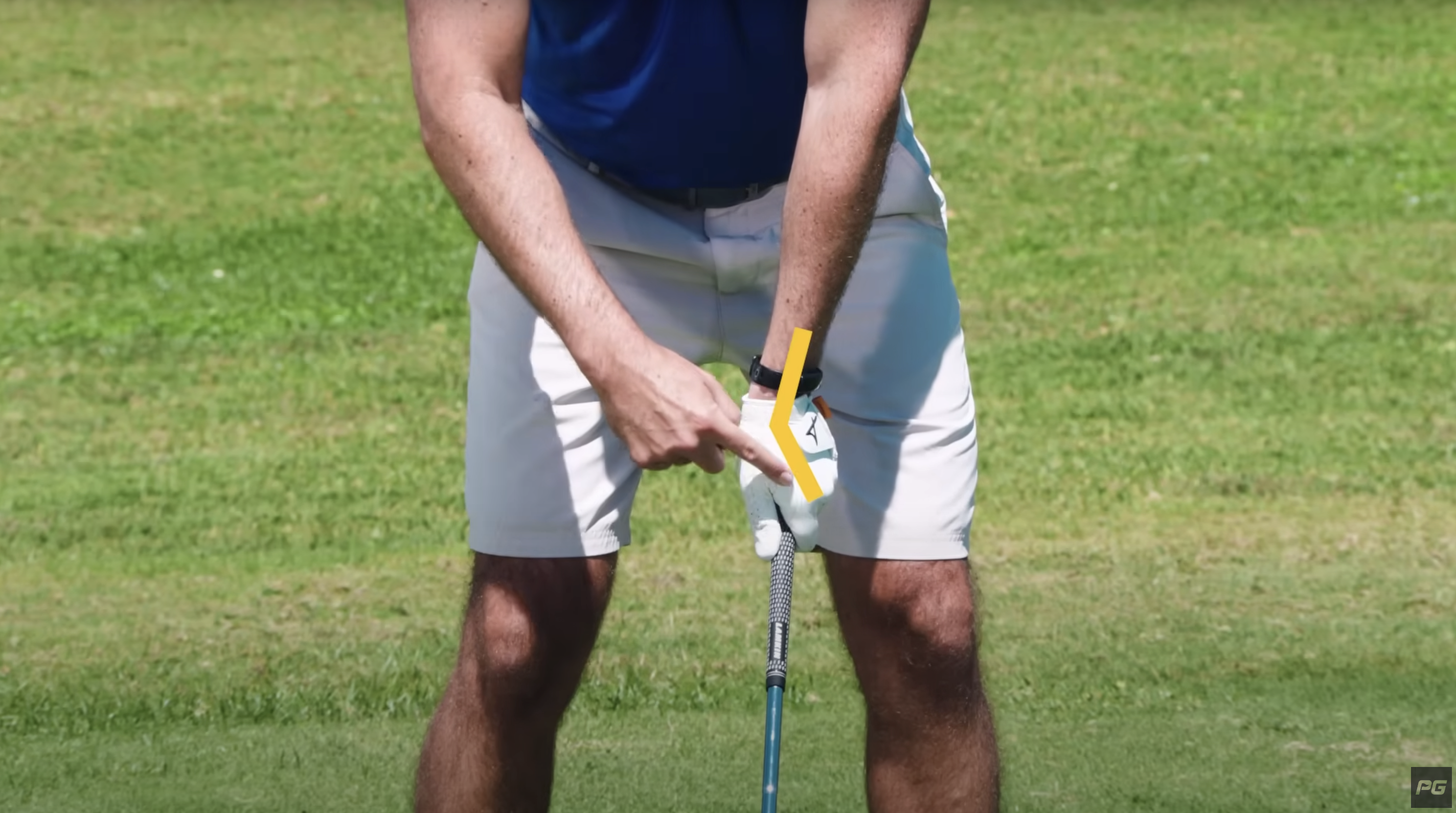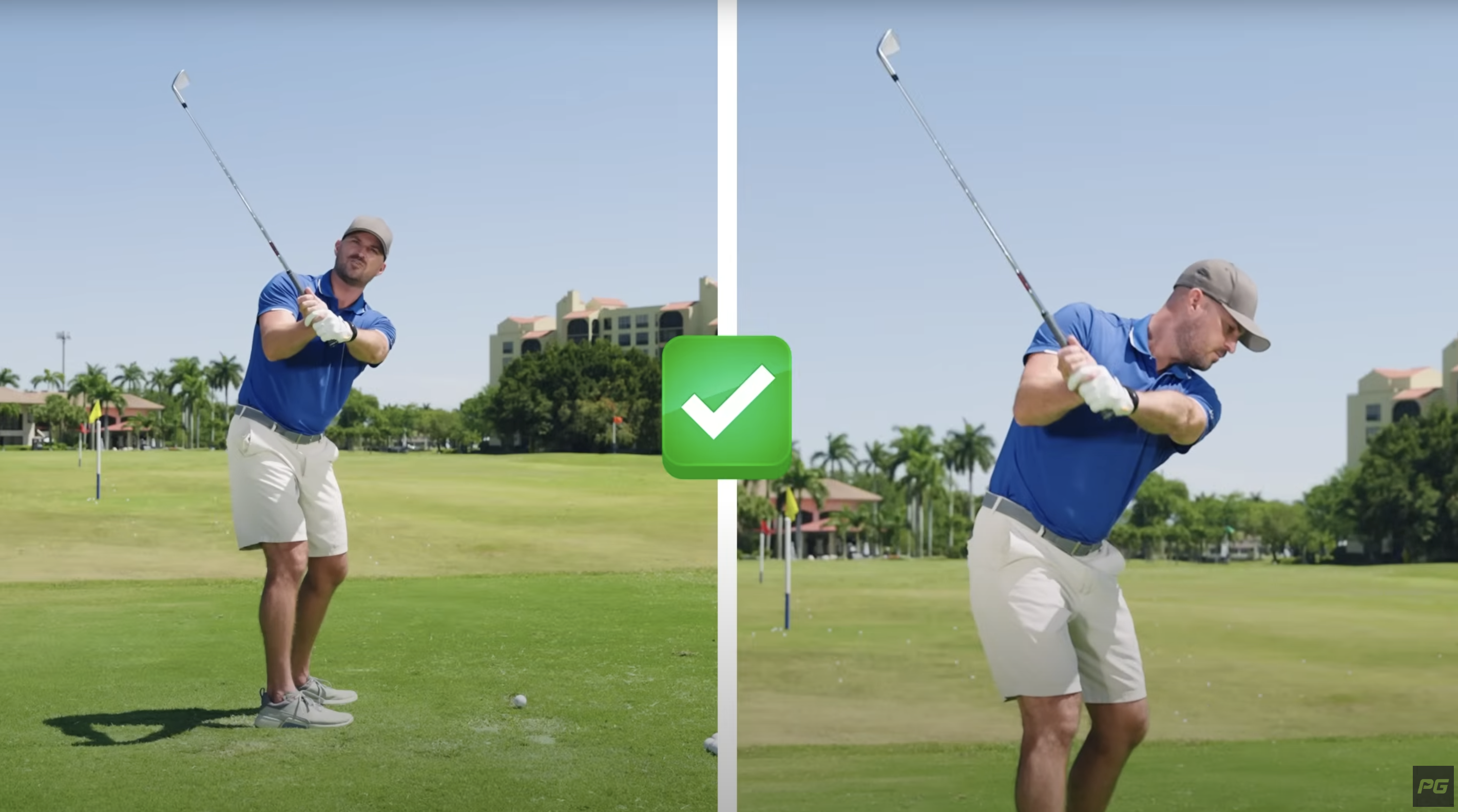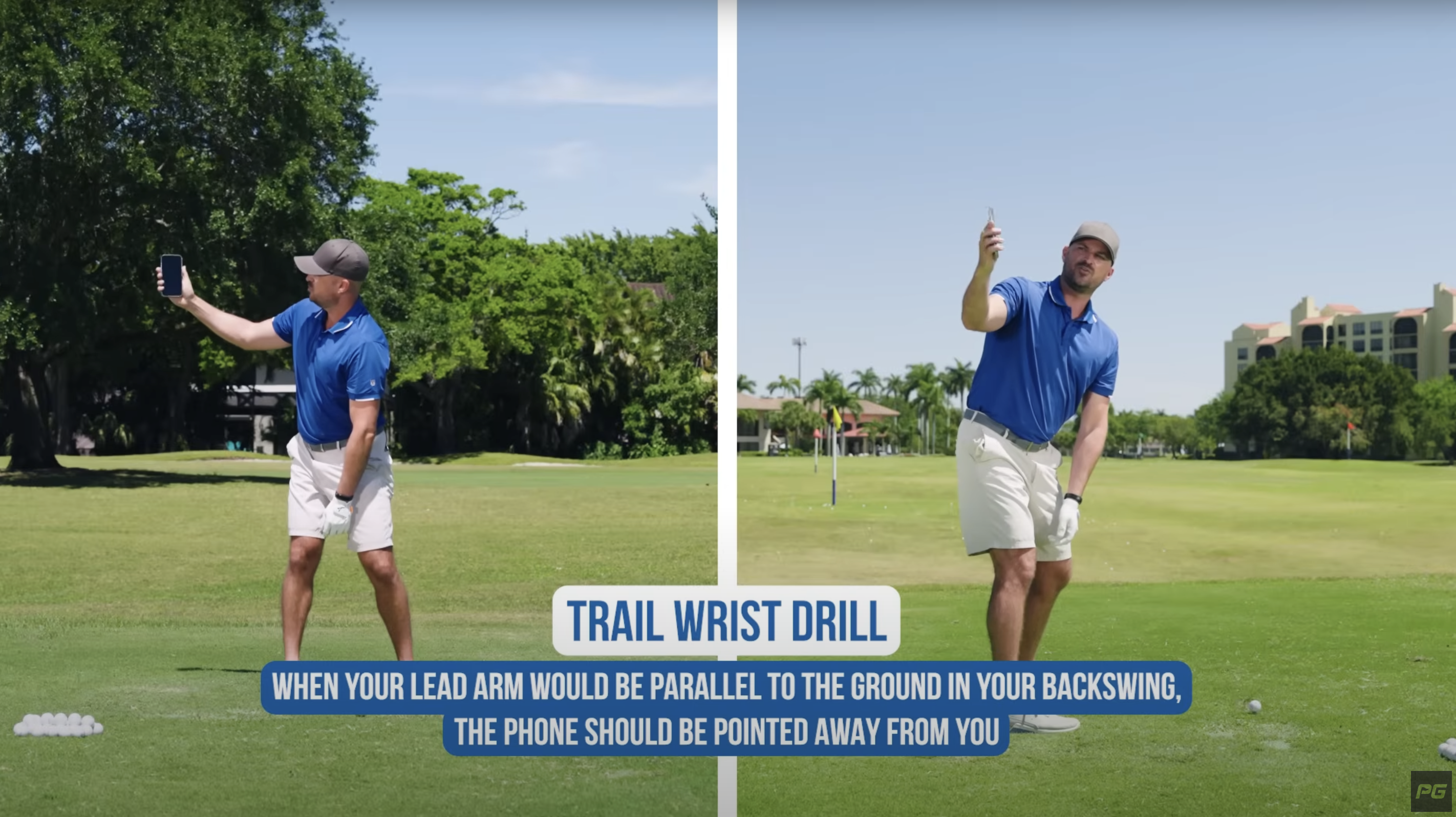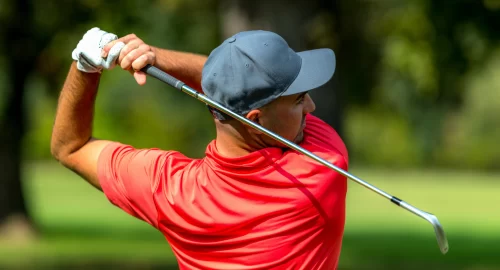
In the quest for a reliable and powerful golf swing, one subtle error consistently trips up players: the cupped lead wrist throughout the swing. A simple fix can transform contact and consistency that up to 95% up golfers struggle with.
Watch the video below to get proper visuals for this wrist hinge fix, and keep reading for a breakdown of the full drill. Plus, a training aid that gives you instant clubface feedback and dials in your clubface control.
The Cupped Lead Wrist Culprit
At setup, a minor cup in the lead wrist (also called wrist extension) helps establish a firm grip. When golfers preserve this cupped position through takeaway, transition, and impact, that’s where the issues start.
A persistently extended wrist leads to two critical errors:
- The club moves too steeply—often prompting pulls or fades.
- The club face remains open, resulting in inconsistent strikes, lack of shaft lean, and weak or errant shots.
Why The Hinge Matters: Effects on Swing Dynamics
Visual cues show how a cupped lead wrist:
- Pivots the shaft into a steeper path.
- Holds the club face open, drastically reducing control at impact.
By flattening the lead wrist, the shaft naturally achieves a shallower angle, encouraging an inside swing path and a square club face—both hallmarks of proficient ball striking.
The Fix: Use the Trail Hand to Balance the Motion

So how do you shift from cup to flat? The key lies in the often-overlooked role of the trail wrist. During the backswing, the lead wrist hinges upward (vertical hinge). Left unchecked, this intensifies the problematic cup. The solution: simultaneously bend the trail wrist backward (into extension). This motion offsets the cup in the lead wrist and aligns the club face.
At left-arm parallel, aim for your lead wrist to be flat, and your trail wrist bent at about 45° relative to your forearm. You should feel this progressively through your swing: as your lead wrist flattens, your trail wrist extends naturally.
Golf Practice Drill: The Phone Drill

A practical way to train this feel:
- Hold your phone in front of you, screen facing forward like a club face.
- On the takeaway, tilt the phone slightly downward—this simulates a bad, cupped wrist feel.
- As you hinge to left-arm parallel, point the phone away from you—this aligns with bending the trail wrist back and flattening the lead wrist.
- Carry this “down, away” sensation into your swing: down → away, away → down, away → away.
This rhythm helps ingrain proper wrist sequencing and improves ball striking quickly.
Taking It Further: The Hinge Training Aid
For golfers who want faster feedback, the Performance Golf Hinge Training Aid is a powerful solution. Designed specifically to teach correct wrist mechanics, the Hinge provides real-time resistance and guidance to ensure your lead wrist flattens and your trail wrist bends back properly.
Here’s how it connects to fixing the cupped wrist mistake:
- Instant feedback: The Hinge makes it obvious when your lead wrist stays in extension, forcing you to feel the correct flat position.
- Better sequencing: It reinforces the proper relationship between trail wrist extension and lead wrist flattening, so the shaft shallows and the face squares automatically.
- Faster learning curve: Instead of relying only on “feel,” you get a physical reminder that accelerates improvement.
By training with the Hinge, you build the muscle memory that makes the “down, away” motion second nature—so you can step onto the course with confidence.
Fix the Wrist, Fix Your Swing
Wrist mechanics may seem minor, but a persistent cup in the lead wrist can derail even the strongest of swings. By inviting your trail wrist to counterbalance, you unlock a flatter lead wrist—ultimately promoting a shallower path, a square club face, and reliable ball striking. Whether you start with the phone drill or incorporate the Performance Golf Hinge training aid, this small tweak has the potential to completely change your game.
